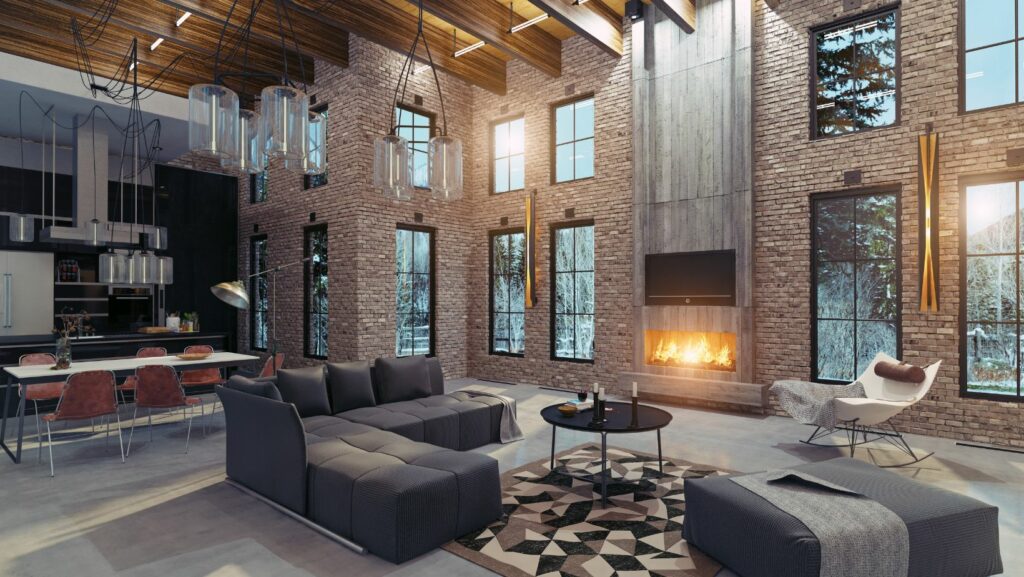Classic and traditional homes have always held a special place in the realm of interior design. They evoke a sense of timelessness, elegance, and sophistication. However, in today’s rapidly evolving world, traditional spaces are being changed. They’re adapting and evolving to the change in lifestyles and advances in technology. Homeowners are searching for ways to infuse modern elements into classic designs; creating both timeless and contemporary homes.
Understanding Traditional Design
It’s characterised by a sense of familiarity, symmetry and rich detailing. Traditional design draws inspiration from various historical periods such as the Renaissance, Georgian and Victorian eras.
The key elements of traditional design include ornate furnishings, intricate mouldings and a warm colour palette that’s dominated by earth tones and rich hues. These spaces often exude a sense of grandeur and formality; there’s usually an emphasis on craftsmanship and attention to detail too.
Embracing Modernity in Furniture
Where traditional furniture pieces are known for their ornate carvings and luxurious fabrics, modern homeowners are drawn to sleeker, more streamlined designs.
To modernise traditional spaces, designers are incorporating furniture with clean lines, minimalist silhouettes and understated upholstery. An example of this would be taking a classic wingback chair that’s upholstered in a neutral fabric and pairing it with a sleek, contemporary coffee table. This creates a harmonious balance between the old and the new.
Updating Flooring Choices
Traditionally, solid wood flooring adorned with intricate area rugs are a staple of classic interiors. Even to this day, they remain a loved feature with their undeniable beauty and elegance. But you can embrace sustainable alternatives such as bamboo or engineered wood flooring in order to modernise your home.
Patterned tiles or polished concrete is another route to go down. These add a contemporary twist to traditional spaces, infusing them with a sense of modern flair.
Modernising Wallpaper
Another staple of traditional design is wallpaper, with patterns ranging from floral motifs to intricate damasks.
In today’s interior design, you can modernise traditional spaces by incorporating wallpaper with bold geometric prints, metallic accents and textured finishes. Alternatively, wallpaper in neutral tones or subtle patterns can create a contemporary look, while still paying homage to classic design aesthetics.
Blending Old with New
A key part of successfully modernising traditional spaces is the art of blending old with new.
You can achieve this through thoughtful juxtapositions of contrasting elements. Consider pairing unique furnishings with modern art pieces or integrating traditional architectural features with contemporary finishes.
By mixing distinctive styles, textures and materials, you can create a dynamic and eclectic home, while still preserving the timeless elegance of traditional design.
Maximising Functionality
In today’s fast-paced world, functionality is crucial. When you modernise traditional spaces, it oftens involves rethinking the layouts. This is to maximise efficiency and usability.
You may go about this by removing unnecessary clutter, optimising storage solutions and incorporating smart home technology.
By prioritising functionality, without sacrificing style, you can create a space that’s both beautiful and practical. Catering to all your needs.
Incorporating Sustainable Practices
Another trend that’s shaping modern design is the growing emphasis on sustainability.
Traditional design concepts can easily be modernised by integrating environmentally friendly materials like reclaimed wood, energy-efficient fixtures and sustainable building practices. There are countless ways to incorporate sustainability into traditional spaces without compromising on style or comfort.
Modernising Classic Design Concepts for Your Home
As the boundaries between traditional and modern design continue to blur, it’s a suitable time to rethink classic design concepts. You can embrace modernity by blending the old with the new as well as prioritising functionality and sustainability. Allowing you to create a space that’s both timeless and relevant to your everyday needs.
Whether you update your furniture choices, change your flooring or replace your wallpaper patterns, the art of modernising traditional spaces offers endless possibilities for creativity and innovation in interior design.




More Stories
Color Psychology in Interior Design
Expert Tips: 5 Common Window Cleaning Mistakes to Avoid
Is Winning at the Casino All Luck? Or Can Strategy Play a Part?